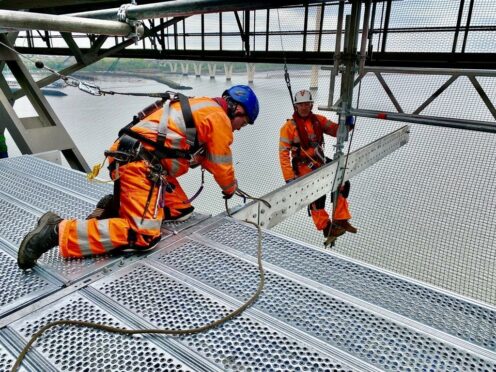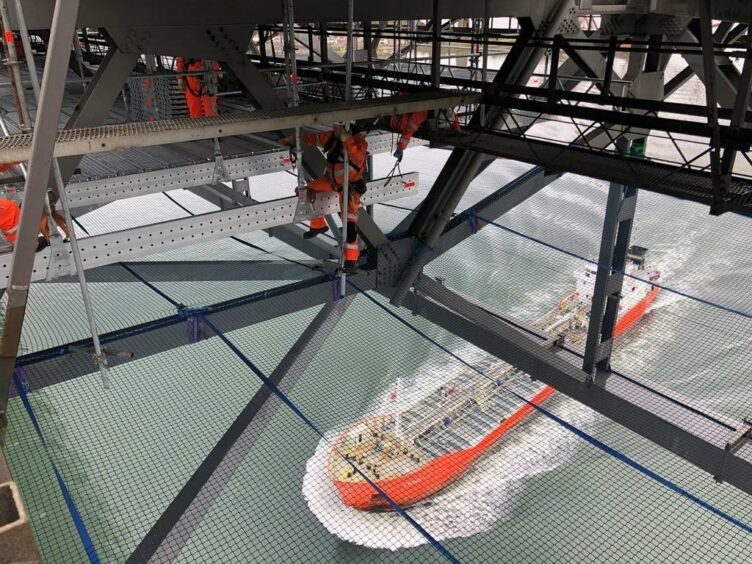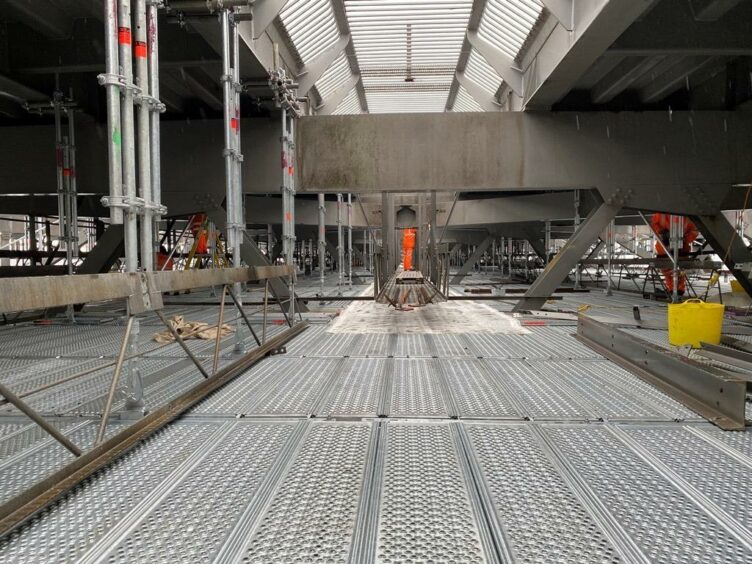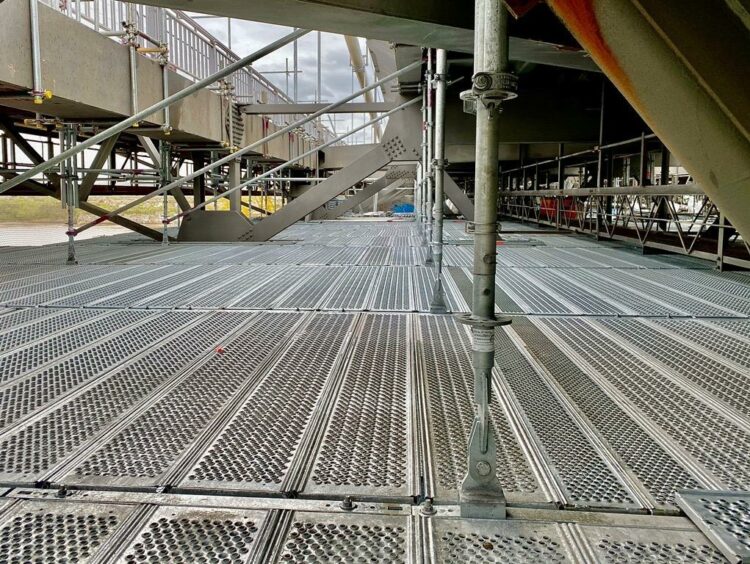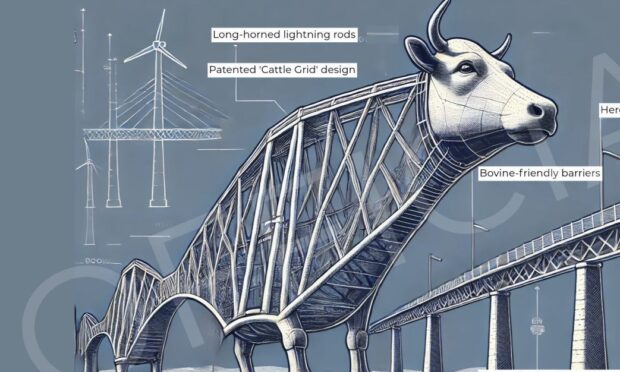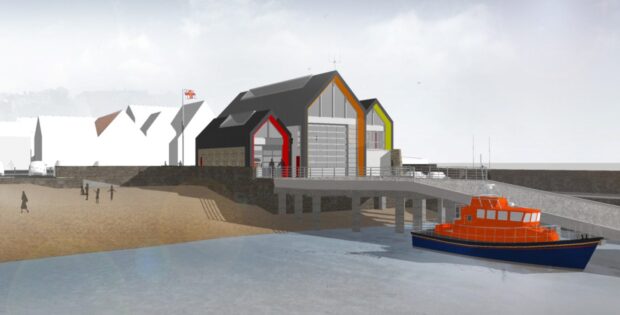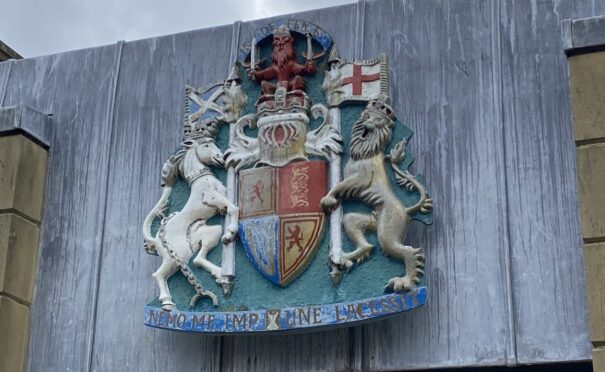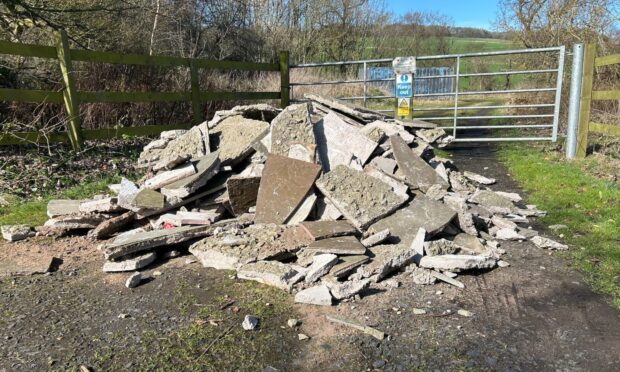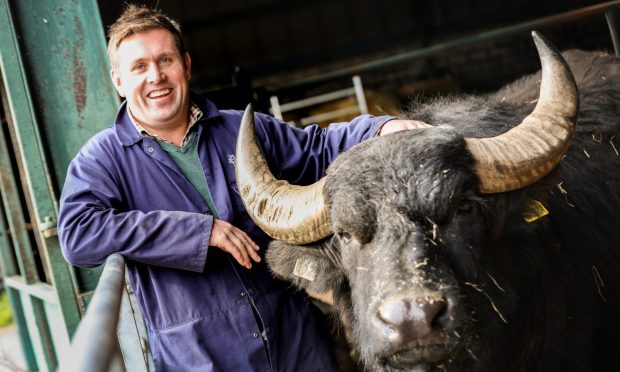A Glenrothes business set up in 2016 has installed some 120 metres of scaffolding underneath the Forth Road Bridge to allow walkways to be refurbished.
The huge structure is being used by engineers to replace and refurbish the existing metal walkways on the underside of the bridge which are used for maintenance.
To facilitate the upgrade, Glenrothes firm I-Scaff Access Solutions has installed 120 metres of suspended scaffolding to allow access for workers and machinery to remove the walkways.
Started in 2016 by directors Ross Brown and David Campbell, the company has been sub-contracted by Millar Callaghan Engineering Services Ltd on behalf of BEAR Scotland.
Speaking to The Courier, Ross Brown said his company has flourished since it was established, employing an average of 30-45 people.
One of the largest suspended scaffolding systems used in the UK, the structure spans the full 38 metre width of the bridge, sitting some 65m above the Firth of Forth.
Mr Brown said that despite the coronavirus lockdown the company has been kept busy, providing access services for industry.
He highlighted the team’s work with water providers, with more people at home during lockdown increasing demand.
Explaining the Forth Road Bridge project, Mr Brown told a trade magazine: “The underside of the bridge deck features a series of parallel walkways, totalling some 10 km in length, which were installed in the 1980s to provide Suspended Span Underdeck Access (SSUDA) to help facilitate engineering, maintenance and inspection activities.
“These gantries are now undergoing their own programme of maintenance which has called for a full width suspended scaffold to be installed as a means of access.
“We have been brought in to meet this need on the sixth phase – some 120 metres in length across the full 36 metres width of the bridge.”
He said that the walkways are to be taken off-site for refurbishment before being returned and refitted.
The bridge has been closed several times in recent months for a number of maintenance projects.
This has included the replacement of main expansion joints which first started in 2019 after being delayed by the opening of the new Queensferry Crossing.
